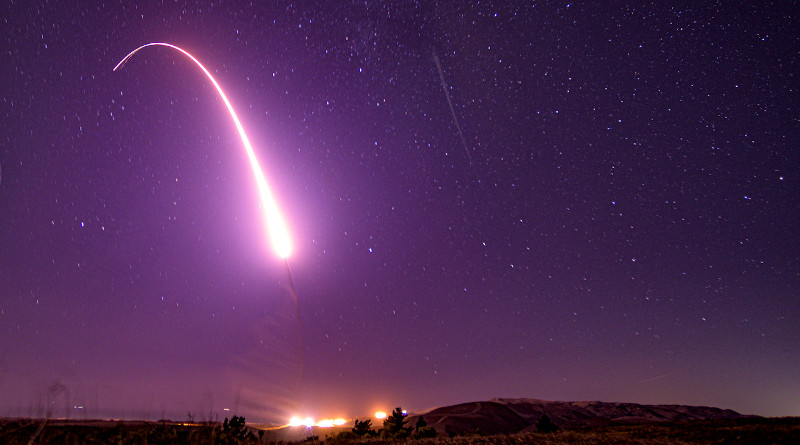COVID-19 Mauled 2020: A Nuclear Disaster Would End Time – Analysis
By IPCS
By Dr Manpreet Sethi*
2020 started on a grim note, with the Bulletin of the Atomic Scientists deciding in January to move the minute hand on its clock to 100 seconds to midnight. This was a reminder of the high level of risk that humanity faced from nuclear issues and climate change. It was meant to shake nations out of their complacency and seriously address the dangerous state of affairs.
However, as it turned out, the world found itself in the throes of an unexpected pandemic even before March was over. The situation only got worse over the rest of the year. As 2020 slips into history, the year will be remembered with sadness for the loss of nearly 2 million lives across the world.
2020 will also be recalled for the geopolitical fractures that became more pronounced as countries withdrew inwards. Gasping to cope with glaring gaps in domestic health infrastructure, governments were also left with battered economies. As reality sunk in, one would have thought that spending priorities would change. But they have not. The focus on military capability to project power, and within that, on nuclear weapons for national security, has remained unwavering.
Consequently, the year was witness to several political and technological factors that heightened the threat of nuclear risks, especially of inadvertent escalation resulting from misperceptions and misunderstanding. Low trust levels among major nuclear-armed states, manifest capability build-up to meet the elusive concept of ‘perfect’ deterrence, prospects of resumed nuclear testing, disavowal of arms control arrangements, refusal to participate in nuclear dialogue, and the unregulated development of emerging, disruptive technologies, are but some of the developments that contributed to the sense of increased nuclear risks. And, there were no moves towards reducing them.
Of course, one could argue that the Treaty on the Prohibition of Nuclear Weapons (TPNW), or the ban treaty, received its 50th ratification in 2020, and this should be a move towards reducing nuclear risk since it bans nuclear weapons. Unfortunately, however, while the treaty will enter into force in January 2021, this will not usher in a nuclear weapons free world (NWFW). The nine nuclear weapon possessors and NATO states have rejected the treaty for its inability to define disarmament, verification, and compliance processes. Nothing, therefore, will change for their nuclear holdings or plans for the future.
For that to happen, a deeper change in the value attributed to nuclear weapons is required. Till such time as countries believe that these weapons add to their security from a range of threats, they cannot be expected to eliminate them from their arsenals. Belief systems or doctrines that contend that the limited use of such weapons is possible for a limited nuclear war add further value to the weapon. The reality, however, is that nuclear use, irrespective of how limited a manner it starts in, would more likely than not end high on the escalation ladder. This fear has kept nuclear use in check until now. But as the memory of Hiroshima and Nagasaki fades, as trust deficits between multiple players grow, as nuclear doctrines favour ambiguities and risk-taking postures, as new capabilities promise prospects of winning a nuclear war, the chances of inadvertent deterrence breakdown significantly multiply.
Any untoward incident involving nuclear weapons would be a disaster several times more unbearable than what COVID-19 has been. For those who doubt this, the BBC documentary, Threads, is highly recommended. It was released in 1984, but has been only sporadically available for public viewing owing to its grim content, which gives a glimpse of how horrific life would be after the use of nuclear weapons. The documentary film, set in the UK, envisages a nuclear exchange between the East and West in which 210 megatons fall on the UK. Expectedly, it causes damage and destruction of a kind that are well-known—of men and material; of health services; of electricity or running water; of communications; of agriculture; of food; of the environment—leading first to extreme cold and then to high UV exposure.
The documentary, however, also brings out dimensions of destruction that we usually do not think about—the loss of unseen and yet essential social threads that hold us together—such as law and order; civility; language; art and culture; the ability to dignify the dead with a burial or cremation. In the fictional setting, the UK loses 30 million people to the nuclear attack. Its population further dwindles as survivors succumb to effects of radioactive fallout, and stillborn babies are delivered. In comparison, the pandemic that has raged on for the better part of this year has led to approximately 50,000 deaths in the UK and about 2 million across the globe. The scale of instant destruction with nuclear weapons is unmatchable.
It is therefore necessary that there be no year that is ever remembered by its sorry survivors for the kind of unthinkable damage that even a ‘modest’ nuclear exchange would cause. Hopefully, 2021 will not only bring good tidings in our fight against COVID-19, but also wisdom and good sense to address urgent nuclear risks. The vaccine is on the horizon. Can something be expected in the new year on the nuclear front, too, to enable a change to the Bulletin’s symbolic clockface?
*Dr Manpreet Sethi is Distinguished Fellow at the Centre for Air Power Studies (CAPS), New Delhi.

